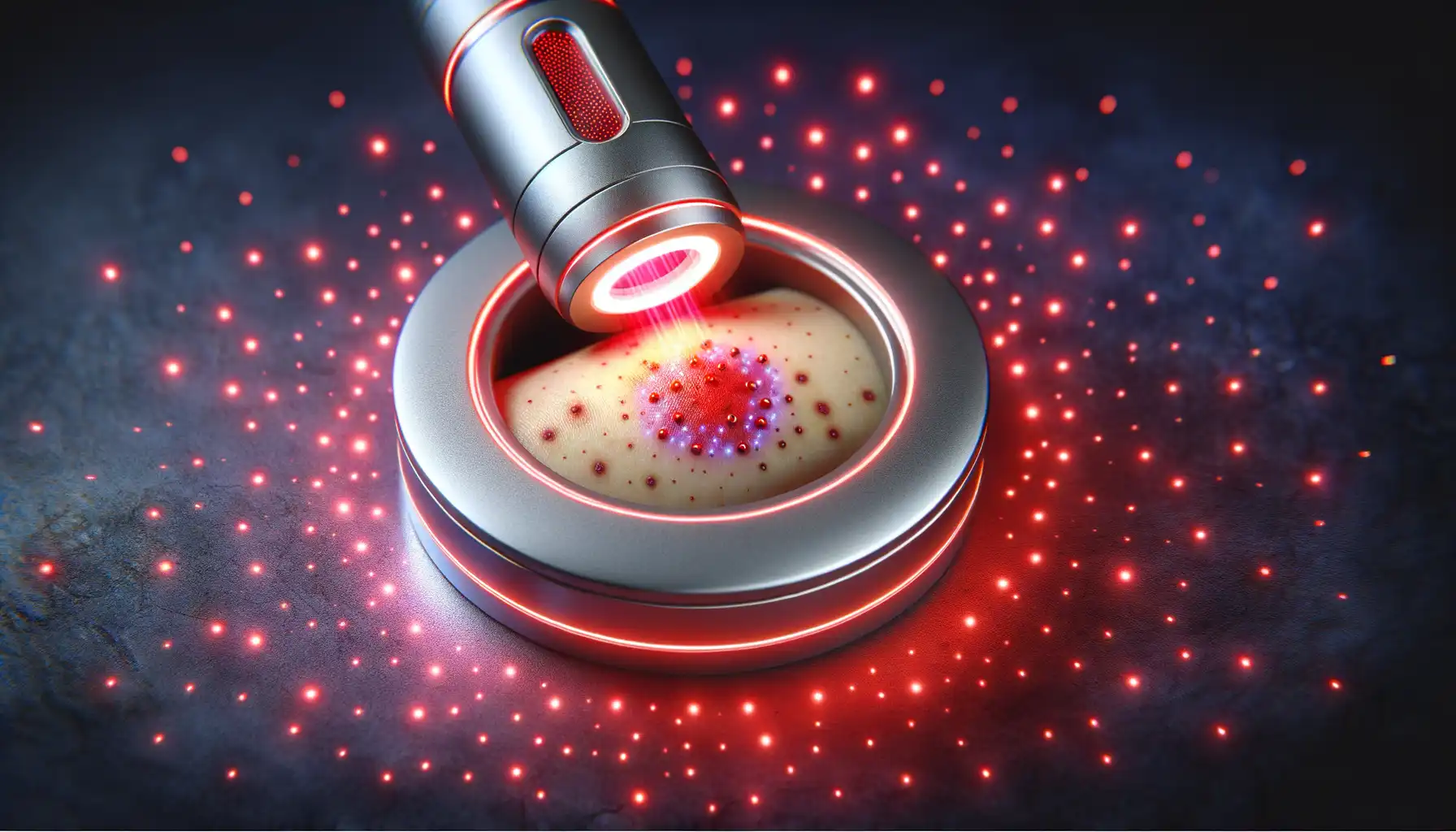Could gentle, radiant heat be a key to helping you breathe easier? Let's explore how infrared heat therapy works and what it might do for your sinuses.
Understanding Sinusitis: A Quick Overview
Before we dive into the heat, let's clarify what sinusitis is. Your sinuses are hollow cavities in your skull, connected to your nasal passages. They are lined with a membrane that produces mucus, which helps trap dust, germs, and other particles.
When you have sinusitis, this lining becomes inflamed and swollen. This inflammation can block mucus from draining properly, leading to that uncomfortable feeling of pressure and congestion.
There are two main types of sinusitis:
Acute Sinusitis: This is a temporary inflammation, often triggered by a cold or allergies. It usually clears up within a few weeks.
Chronic Sinusitis: If your symptoms last for 12 weeks or more despite treatment, it's considered chronic. This condition can be caused by infections, nasal polyps, or a deviated septum.
Whether it's a short-term nuisance or a long-term battle, finding effective sinus congestion relief is the top priority.
How Infrared Heat Therapy May Help Sinuses
So, where does an infrared sauna fit in? Unlike a traditional sauna that heats the air around you, an infrared sauna uses special lamps to generate radiant heat that penetrates your body's tissues directly. This unique approach to heat offers a few potential infrared sauna benefits for sinus sufferers.
Supporting Circulation and Drainage
One of the main ways an infrared sauna may help with sinusitis is through vasodilation—the widening of your blood vessels. As the infrared heat gently warms your body, your blood vessels expand. This process can increase blood flow to the inflamed sinus tissues.
Improved circulation can deliver more oxygen and nutrients to the area, which may help reduce inflammation. Better blood flow might also help thin out the thick, stubborn mucus that’s causing the blockage, making it easier for your sinuses to drain. This can lead to a noticeable reduction in pressure and pain.
Reducing Inflammation
Chronic inflammation is at the core of persistent sinusitis. While research is still growing, some studies suggest that infrared light can have an anti-inflammatory effect on the body. A review published in the Journal of Photochemistry and Photobiology highlights the potential for phototherapy (light therapy) to modulate inflammatory processes. By potentially calming the body's inflammatory response, infrared heat might help soothe the swollen sinus linings causing your discomfort.
Promoting Relaxation and Better Sleep
Dealing with sinus pain is stressful, and stress itself can make symptoms feel worse. The gentle, enveloping warmth of an infrared sauna is deeply relaxing. It helps calm your nervous system and reduce cortisol (the stress hormone). When you're relaxed, your body is in a better state to heal.
Plus, a good night's sleep is crucial for recovery. Sinus congestion often worsens at night, making it hard to rest. The relaxation from a sauna session, combined with a potential drop in body temperature afterward, can signal to your body that it's time to sleep, helping you get the restorative rest you need.
What Does the Science Say?
It's important to approach this topic with a balanced view. The direct scientific evidence on using an infrared sauna specifically for sinusitis is limited. Most research focuses on the broader effects of heat therapy and infrared light on circulation, inflammation, and pain relief.
However, the underlying principles are sound. We know that warmth can soothe aches and that improved blood flow is beneficial for healing. Many people report anecdotal success, finding that a sauna session provides temporary but significant sinus congestion relief. Think of it as a supportive therapy—one part of a larger wellness puzzle—rather than a cure.
Using an Infrared Sauna for Sinusitis: A Practical Guide
If you're ready to try an infrared sauna, following a few simple steps can help you get the most out of your session safely.
Setting the Right Temperature
infrared saunas operate at lower temperatures than traditional saunas, typically between 120°F and 150°F (49°C to 65°C). Start on the lower end of this range. You want a comfortable warmth, not an overwhelming heat.
Duration and Frequency
For your first few sessions, aim for a shorter duration, around 10 to 15 minutes. As your body acclimates, you can gradually increase your time to 20-30 minutes. Listen to your body—if you feel dizzy or uncomfortable, it's time to get out.
As for frequency, 2-3 sessions per week are often enough to see potential benefits without overdoing it. Consistency is more important than intensity.
The Importance of Hydration
You will sweat in an infrared sauna. It's essential to hydrate well before, during, and after your session to replace lost fluids. Drink plenty of water throughout the day of your sauna session. Consider adding an electrolyte powder to your water afterward to replenish lost minerals.
Post-Sauna Sinus Care
After your session is a great time to support sinus drainage. The heat has helped to loosen things up, so you can take advantage of it.
Gentle Nasal Rinse: Use a saline solution or a neti pot to gently flush your nasal passages. This can help clear out the thinned mucus and any irritants.
Blow Your Nose Gently: Don't force it. Blow one nostril at a time to avoid creating pressure that could push mucus back into your sinuses.
Infrared Sauna vs. Steam Room: Which is Better for Sinuses?
When you think of heat for congestion, a steamy shower or a traditional steam room often comes to mind. So, how does a dry sauna vs steam room stack up?
Steam Room/Traditional Sauna: These create a hot, humid environment. The moist air can be very soothing for irritated nasal passages and help thin mucus, much like a personal steam inhaler. The primary mechanism is inhaling warm, moist air.
Infrared Sauna: This uses dry heat that penetrates the body to promote circulation and reduce inflammation from within. The focus isn't on inhaling moist air but on creating systemic effects that may benefit the sinuses.
There's no single "better" option; they just work differently. Some people find the humidity of a steam room provides more immediate relief, while others prefer the deep, gentle warmth of an infrared sauna. You might even find that alternating between them works best for you.
Combining Sauna Use with Other Healthy Habits
An infrared sauna session is a powerful tool, but it works best when combined with other supportive habits. To build a holistic approach to sinus health, consider adding these practices:
Stay Hydrated: Drinking water throughout the day keeps mucus thin and flowing.
Use a Humidifier: Running a humidifier in your bedroom at night adds moisture to the air, preventing your nasal passages from drying out.
Saline Nasal Sprays: Regular use of a simple saline spray can keep your sinuses moist and clear of irritants. According to the Centers for Disease Control and Prevention (CDC), it's critical to use only distilled, sterile, or previously boiled water for sinus rinsing.
Elevate Your Head While Sleeping: Propping your head up with an extra pillow can help your sinuses drain more effectively overnight.
Gentle Movement: Activities like walking or gentle yoga can boost circulation and help relieve sinus pressure.
Safety First: Who Should Be Cautious?
While infrared saunas are generally safe, they aren't for everyone. It's crucial to be aware of safety tips and contraindications. Certain individuals should avoid saunas or speak with a doctor first.
Talk to your healthcare provider before using an infrared sauna if you:
Are pregnant
Have a heart condition or low blood pressure
Are taking medications that can affect your body's ability to regulate heat or cause drowsiness
Have a condition that impairs your ability to sweat, such as multiple sclerosis
Are recovering from surgery or have open wounds
Have acute joint injuries or swelling
Are prone to dehydration
Additionally, never consume alcohol before or during a sauna session, as it increases the risk of dehydration and accidents. As noted in a publication by Harvard Medical School, it is wise to start with short sessions and leave immediately if you feel unwell.
Finding Your Sauna: At Home vs. The Spa
If you're interested in making infrared sauna use a regular habit, you have two main options:
Spa or Wellness Center: Many gyms and spas now offer infrared sauna sessions. This is a great way to try it out without a big investment. You can buy single sessions or packages.
Home Sauna Unit: For those committed to long-term use, investing in a home infrared sauna can be convenient and cost-effective over time. There are many sizes and models available, from large walk-in units to smaller, single-person models.
A Warm Path to Clearer Breathing
Dealing with the relentless pressure of sinusitis can be exhausting, but you have options beyond the pharmacy aisle. Incorporating infrared sauna sessions into your routine may offer a comforting, natural way to support sinus health. By promoting circulation, potentially reducing inflammation, and encouraging deep relaxation, the gentle warmth can be a powerful ally in your quest to breathe easier.
Remember to listen to your body, stay hydrated, and combine your sauna practice with other healthy habits. This holistic approach could be your ticket to finding lasting sinus congestion relief and feeling like yourself again.



